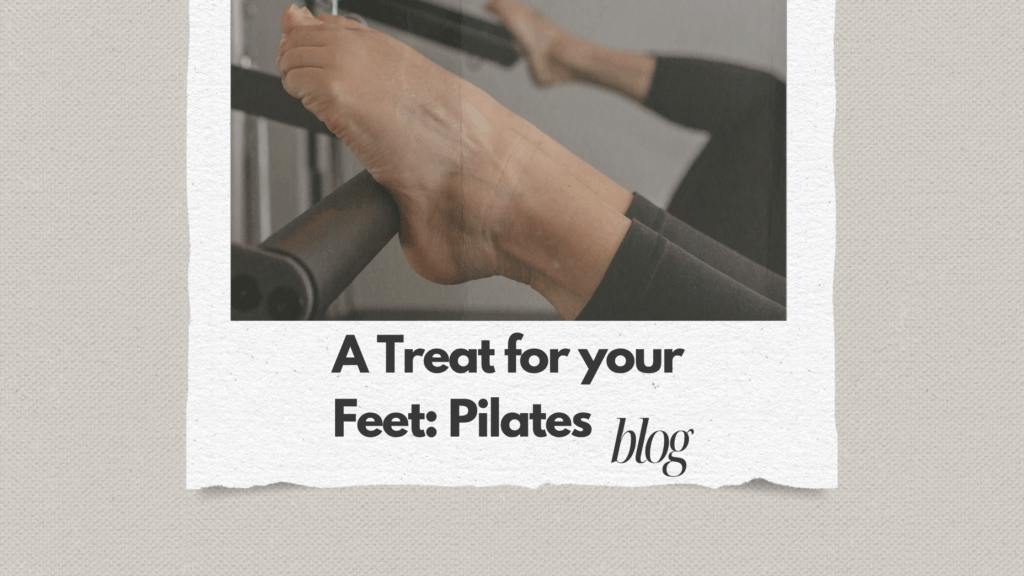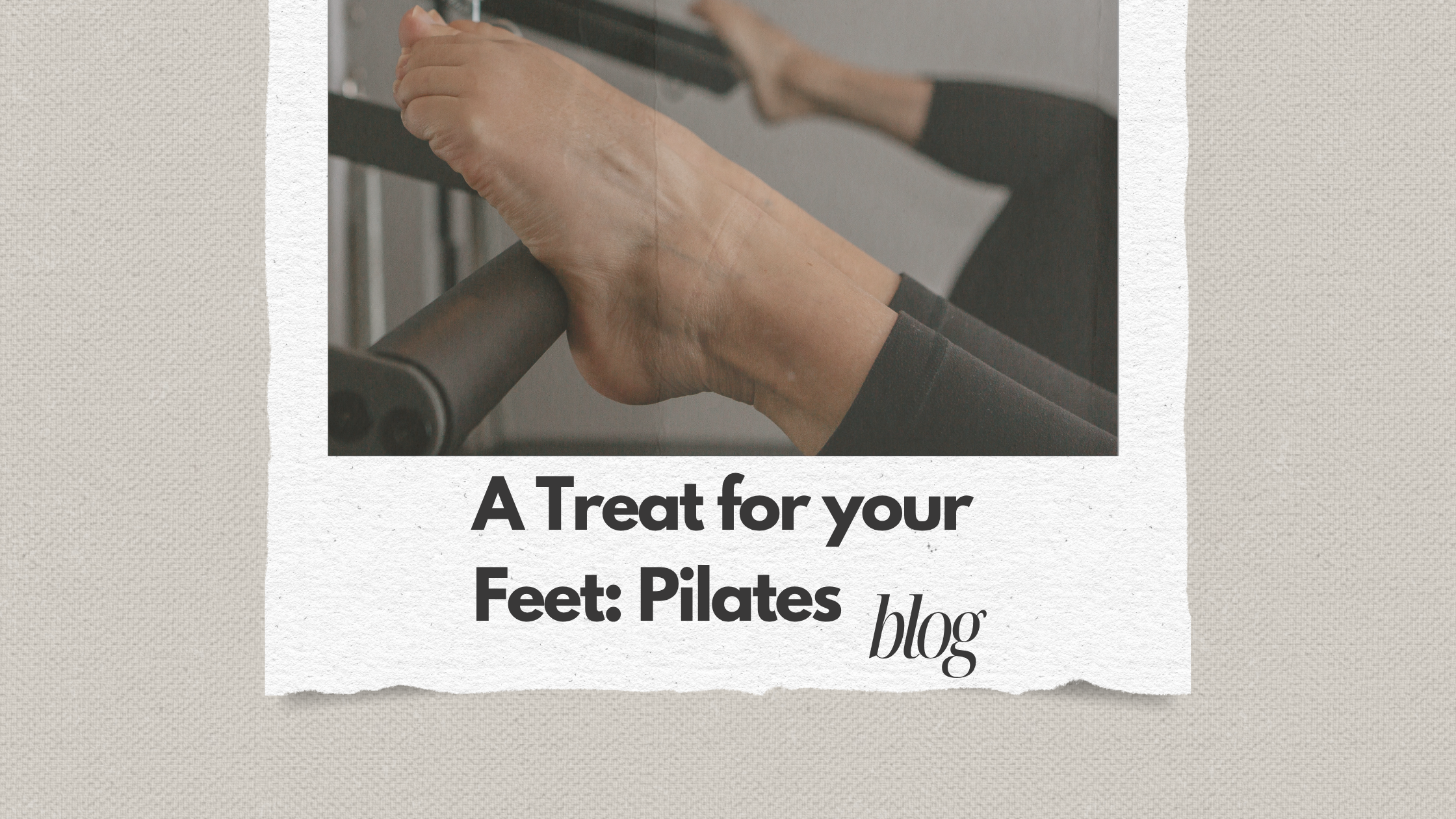
Sore feet are a common complaint, and it’s no wonder – they literally support us walking around all day. Then there are the shoes we stuff them in that could be too narrow, be inflexible, or have high heels. If your feet can’t move the way they are designed to, you’re going to start to feel tightness and pain, even in other areas of your body. This is where Pilates quite literally steps in, working your feet to build the strength, mobility, and flexibility, which in turn can help those aching feet.
How Pilates Works The Feet
In Pilates, you can directly work on the feet using items like the toe gizmo and foot corrector, or by practicing picking up marbles with your toes or rolling your feet on a ball. But Pilates has some sneaky ways of strengthening and stretching the feet, too. That’s because of the many varied ways you use your feet on the different apparatuses and even on the mat.
Fancy Footwork On The Reformer
The very first thing we do in Classical Pilates on the reformer is the footwork. This routine puts each part of the sole of the foot into contact with the footbar. You place your toes on the footbar with a slightly lifted heel, and go in and out ten times. Next is the arches, where you wrap your feet around the bar (sometimes called bird on a perch). Then you move to your heels, placing them on the bar while trying to keep your foot flexed as if it’s standing against a wall. Finally you go into tendon stretch, where you are back on your toes, open the springs, and try to maintain straight legs while you lower your heels down and back up. This is much like doing heel drops off the edge of a stair.
Other ways you use your feet on the reformer are when your feet connect to the shoulder blocks, you put the straps onto the arches of your feet, or hook your feet under the strap.
The Wunda Chair Is Wonderful For The Feet
Many exercises on the wunda chair require a great deal of concentration and balance. Finding your balance requires using many muscles in the body, including those in your feet. With practice and as you gain strength, balancing on one foot will become much easier. But being aware of how you’re using your feet to balance will help, too. If your feet are tight and squished up, it’s harder to balance than when your toes and feet are solidly connected to the floor. Pumping the pedal on the wunda chair is another way your feet get a good workout.
Finding The Foot Connection
There are so many exercises in Pilates where you need to connect your feet strongly to the mat, the shoulder blocks, the bar, or hooking them under a strap. Sometimes, like in some balance exercises, your feet need to be a stable base, while in others you will flex and or point your feet. If you don’t actively use your feet, exercises can feel a lot easier. That’s because initiating movement from your feet engages other muscles – they are helping you get stronger!
As a teacher, it’s important to ensure that we are coaching clients to be aware of these various ways of using the feet. Whether it’s a specific exercise for the feet or just part of every other exercise in Pilates, they are an important part of finding awareness in how we move.
Bye Bye Foot Pain
We have several clients at b.Pilates & Fitness who had foot pain when they started. After practising regularly, many no longer have these pains. I know that for myself, Pilates is an important part of helping my own feet stay pain free, having had to deal with a few bouts of plantar fasciitis.

View comments
+ Leave a comment